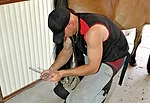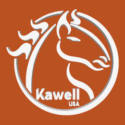Advertise Follow Us
Articles by Frank Lessiter
Farrier Income Continues Gradual Gain
Data gleaned from the latest American Farriers Journal Farrier Business Practices survey indicates the hoof-care industry is holding its own and is apparently doing better than other areas of the equine market
Read More
Spacious Truck Provides Convenience, Inventory And A Comfortable Ride
The necessary equipment and supplies to shoe Saddlebreds are readily available when this big rig hits the road
Read More
From the Desk Of AFJ
For 16 Years, There's Always Been A Special Mid-Summer Tribute To Farriers
Read MoreTackling Hoof Cracks
A half-dozen American Farriers Journal Editorial Advisory Board members share their many years of experience in dealing with hoof cracks
Read More










